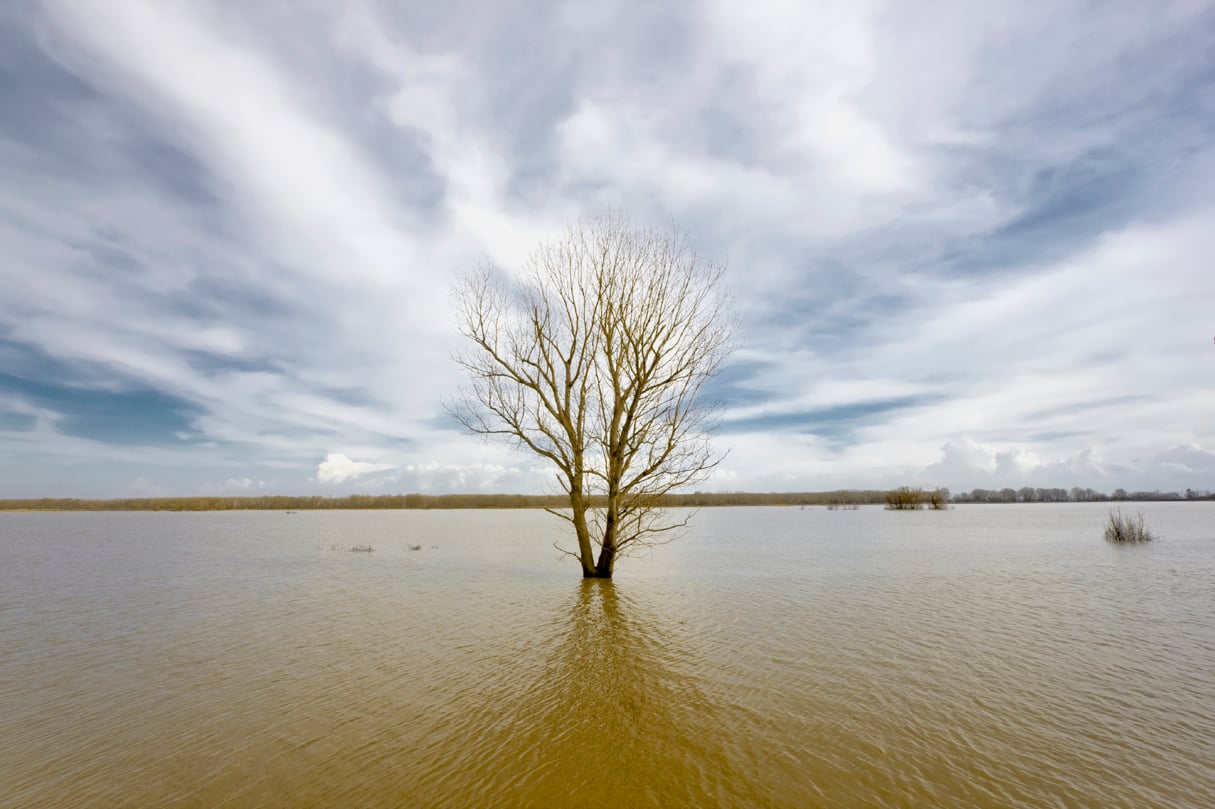President Trump took one of his most drastic actions to date Tuesday when visited the Environmental Protection Agency to sign an executive order aimed at voiding federal efforts to combat the effects of climate change. The order kicks off the process of reversing former President Barack Obama‘s Clean Power Plan, which sought to retire coal-fired power plants in favor of wind, solar, and other clean sources of energy.
Trump’s executive order follows years of his stating his belief that climate change is a “hoax,” and is likely to ensure that the United States will not meet its obligations under the 2015 Paris Agreement in which 194 countries pledged to reduce their carbon emissions. It also comes on the heels of the White House’s budget proposal, which called for deep cuts to the EPA and other agencies that work on environmental and climate policies.
Besides trying to eliminate federal workers who makeup the core of the Washington region’s economy, Trump’s climate and energy agendas would also cause severe harm to the local environment, says Mike Tidwell, the executive director of the Chesapeake Climate Action Network. Tidwell tells Washingtonian that the White House’s anti-climate agenda has spurred state-level progress—like the ban on hydraulic fracturing for natural gas Maryland adopted this week—but that federal actions will still do a lot of damage.
Seeing Trump sign that executive order, along with the cuts proposed in his budget—what’s the immediate response to things like that?
Just last night the Maryland General Assembly chose to go in a completely different direction on fossil fuels and climate change and gave final approval on a ban on fracking. You see on the state level in DC, Northern Virginia, and throughout Maryland, people who have decided to make environmental issues a greater part of their personal lives in response to the disaster of the Trump presidency.
A lot of environmental and energy policy still comes down from the federal government, though. Interstate programs like the Chesapeake Bay Program usually have a federal mandate.
I think it’s accepted at the state level there are going to be losses. There’s no sugarcoating it. There’s going to be less money to clean up the bay. Less regulations for dirty power plants. I don’t think anyone’s believing there can be statutory and regulatory equal and opposite responses to the federal level. What Trump has done is remind people these things can’t be taken for granted. What I do know is we won’t have a national comprehensive clean-energy strategy in America unless we have 50 state buy-in. The same way people went to town halls in the reddest of red states to defend the Affordable Care Act, you’re going to see on behalf of climate. In Maryland, I don’t know if we would’ve gotten a [fracking] ban if Trump hadn’t won. Trump put wind in the sails. Like Gloria Steinem said at the women’s march, this is the upside of the downside.
Has your organization benefitted from the surge in donations to progressive organizations since the election?
Our year-end giving for 2016 was three times higher than it was for 2015. That’s directly related to Trump.
White House budgets are wish lists. But even if some of what Trump’s proposing there goes through, and combined with this executive order, what effects are we going to see around here?
The natural gas industry is hellbent on creating a massive infrastructure to extract shale gas from West Virginia and Pennsylvania and move it to market throughout the mid-Atlantic. To do that at the scale the gas industry wants, you’d just see pipelines everywhere. Not just pipelines through Maryland and Virginia, but the attendant infrastructure with it like recompression stations, because gas needs to be recompressed every 40 to 100 miles. Trump wants to frack for oil in North Dakota, and a lot of that oil goes on rail. If the oil industry retains control over the Trump administration, you’re going to see a lot more dangerous material coming through our region. You’re certainly going to see more of the inclement weather that comes with climate change, like where you see 50 percent of the cherry blossoms die off, or increased flooding in Annapolis on a clear day.
So, how screwed are we?
We’re pretty screwed. There is no doubt we have crossed or are in the process of crossing some dangerous thresholds when it comes to climate change. We have satellite photography of polar ice melt. But we also have the evidence people see everyday. We have half the cherry blossoms killed. We go from wet weather to long dry spells to extremely warm days in the middle of winter. Years ago, my 11-year-old son asked me “Are we gonna make it?” I said it’s sort of like a football game. Has there ever been a team that’s been down by three touchdowns and two minutes to go and come back? It takes amazing strategy, incredible teamwork, stellar leadership combined with a big dose of luck.



















